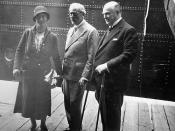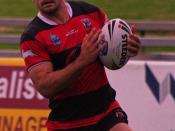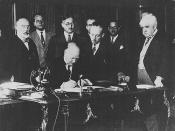Rebellious Silence is a photograph by Shirin Neshat, who is also the subject. In the work, Shirin Neshat's face is covered by Islamic calligraphy and is divided (left to right) by a rifle (assumedly but not necessarily held by herself). The calligraphy covers the parts of a woman's face that one must hide in Iran's theological state. The photograph is black and white, adding to the already serious tone of the work.
The first impression received is one of oppression, it seems as though the woman feels oppressed and her eyes are very bleak. The gun may symbolise oppression as it is not necessarily the subject who is holding the gun but possibly an aggressor. The gun could also be considered a symbol for warfare, possibly in Shirin Neshat's country, Iran. There is also a strong sense of religion involved in the painting, Neshat is wearing the Muslim clothing and where her face is supposed to be covered is the writing.
Before any of these details can be used to interpret the artist's intention it is important to learn of Shirin Neshat's background. Born in the middle of the twentieth century into a wealthy family in Iran. Her parents, particularly her father, worshiped western culture and in doing so, sent Neshat to a Catholic boarding school - Neshat recalls the school as being cold hearted. Neshat left Iran slightly before it's revolution for Los Angeles to study art. Upon the revolution (into a strictly Islamic state), Neshat's parents, who planned to retire, were left without welfare and put on a minute salary.
The fact that the revolution ended so badly in Iran (with violent ramifications being seen now particularly) could indicate the combination of guns and religion in Rebellious Silence. The work also uses this combination...


